Testimonials
In here you will be able to read the testimonials in first hand of people that have done the Camino. From people with physical and mental disabilities to support staff, from their struggles to their achivements, you will get a real sense of the experience of doing the Camino de Santiago.
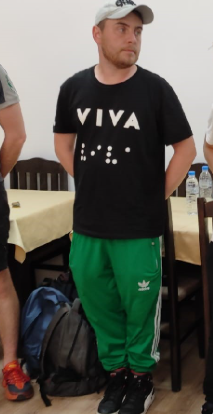
Andrei
Two years ago, I went to a project in Bulgaria which enfolded during a 10 day period. The main activity was walking each day for 3-4 hours then setting the camp. For me it was just wow, because I wasn’t really the outdoor kind of person. Being visually impaired gives me anxiety when I am in an open and unknown space, but there, surprisingly, I felt safe. I had a support person and members of the association around me, and we ended up having a lot of fun. Never in my life have I ever set a tent and slept in it, so the whole experience for me was completely amazing. I was as enthusiastic as a child and I since then looking forward to similar activities.

Alexandra Neves
Our Camino de Santiago was a journey of resilience and determination. A group of elderly residents and caregivers from the Centro Social Paroquial dos Pousos set out on this legendary pilgrimage as part of the Academia dos Sonhos project, which seeks to fulfill the dreams and wishes of our residents.
Over four carefully planned days, we covered 5 to 6 kilometers daily, alternating between walking and using wheelchairs with the support of our caregivers. Our route included stages from Vila Praia de Âncora to Caminha, Valença to Tui, Padrón in the Rías Baixas, and finally from Monte do Gozo to the Cathedral of Santiago. Along the way, we visited churches, shared moments of prayer and reflection, and immersed ourselves in the culture and gastronomy of the Camino. Staying in pilgrim hostels and collecting stamps on our credentials, we proudly earned our Compostela, the pilgrim certificate.
The journey brought moments of mutual support and joy, as well as challenges that strengthened our bond. Fellow pilgrims and tourists recognized us, often cheering and encouraging us, thanks to the national media coverage of our story.
Arriving at the magnificent Cathedral of Santiago was an emotional moment for all of us. Tears of joy flowed as we embraced and celebrated our achievement. Participating in the pilgrim mass, witnessing the botafumeiro ceremony, and visiting the tomb of St. James were deeply moving experiences that we will treasure forever.
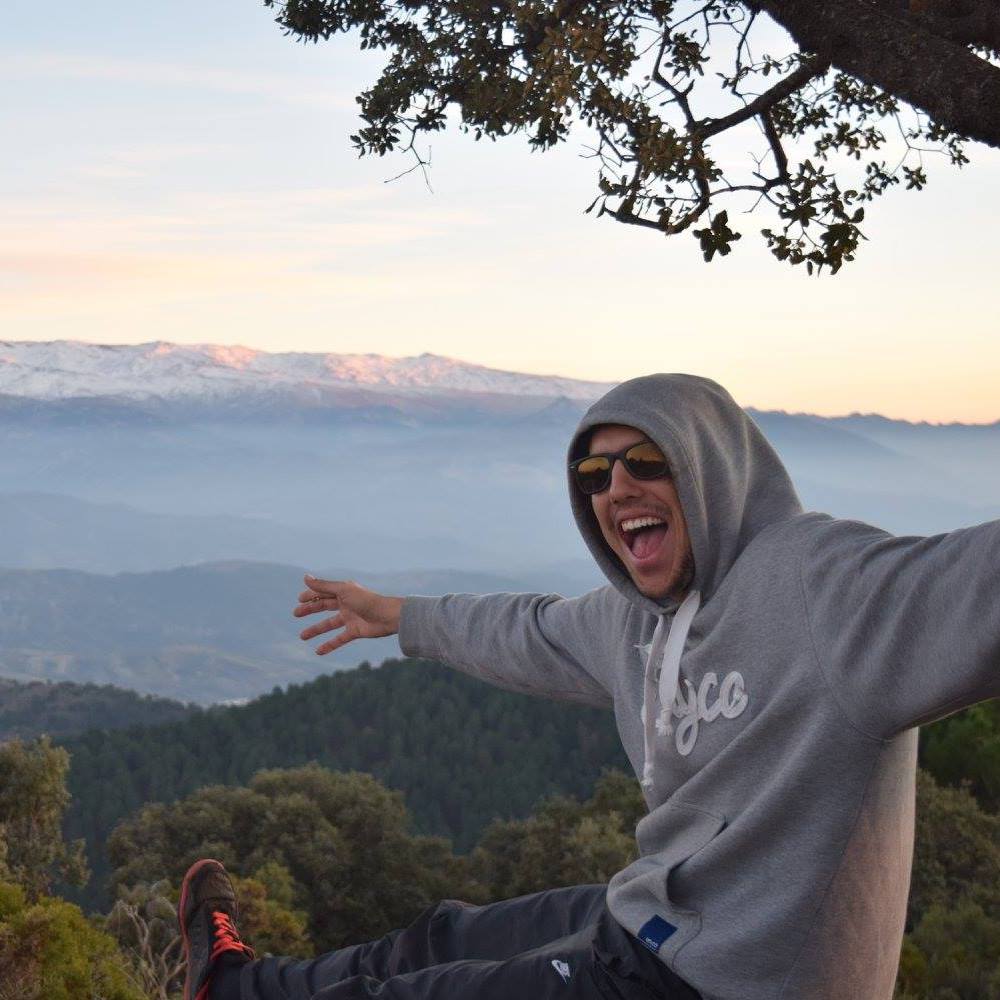
Lope
Since he was a child, Lope has had a great passion for the high and low mountains. Living in Granada, where the highest peak of the Iberian Peninsula called Mulhacen (3,478 m) is located, has been lucky for him as he has always been surrounded by landscapes that motivate him to go outdoors and explore new paths. He has been a scout and, over time, has ventured on long-distance routes in places such as Sierra Nevada, Picos de Europa and even outside Spain, in countries such as Georgia or Portugal.
After a cranioencephalic traumatism that caused him epilepsy, Lope had a break in his routes and had a long rehabilitation. However, with effort, discipline and the support of those around him, he has managed to stabilise his illness and return to hiking, one of his greatest passions.
Lope says: ‘Epilepsy has taught me to listen to my body, to respect my limits and to know myself better. Thanks to the learning that life has given me, I have learned to value what I can do and to enjoy every step. The mountains have always been a refuge for me, and now, more than ever, I feel that hiking helps me to connect with myself’.
He adds: ‘I think there is a lot of ignorance about epilepsy. Sometimes people assume that you can't do certain things because you have it, but the important thing is to adapt and find the limits that you can manage. Epilepsy doesn't define me’.
Thanks to his perseverance and love for nature, Lope continues to prove that, with attitude and respect for one's limits, anything is possible.
António Nina
The Camino de Santiago was an unforgettable journey of four days and 90 kilometres, marked by personal overcoming and discovery. I decided to take on this challenge alone, as a test of my own abilities. As an above-knee amputee, I knew that each step would be a significant effort, but also an opportunity to explore my physical and emotional limits.
Along the way, I found a welcoming atmosphere, with other pilgrims always ready to share words of encouragement and inspiring stories. However, I was surprised by the lack of practical support for people with disabilities. I didn't find Canadians, wheelchairs or other specific resources in the hostels and facilities along the way. Inclusion seemed limited to moral support, and no visible reference or support for the disabled was offered.
The walk brought difficulties, such as rough terrain and long distances without adequate resting places, but it also presented me with moments of gratitude and self-realisation. Every achievement, no matter how small, was celebrated as a personal victory. This experience reinforced my belief in human resilience and the need to make the Camino de Santiago more inclusive so that everyone can fully enjoy this transformative journey. To want is to be able.

Vlad
Being a support person for visually impaired persons has been a rewarding activity for me. I learnt how to guide them, I learnt how to behave around them, what is appropriate to do and what is not, and I learnt that communication is the most important. Two year ago I travelled to Bulgaria to accompany a group of visually impaired youngsters who participated in a project that involved lots of walking outdoor. At first I was quite stressed about it – What if it will be a disaster? What if something bad will happen? It wasn’t a disaster, it was amazing. We walked every day for hours, learning about Bulgarian history and geography from locals and organisers, playing games, sleeping it tents, sitting by the fire, having meeting and workshops and enjoying lunch and dinners together. Having a common goal, gave us all a sense of belonging to something, to a group, a community.
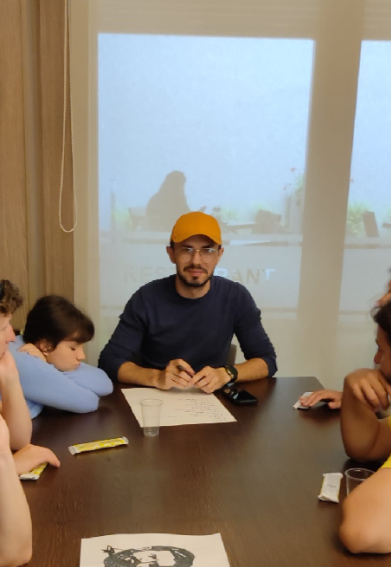
Alvaro G
My motivation to do my first Camino de Santiago dates back to 2016, after going through a rehabilitation process due to a serious knee injury suffered in 2014.
At the beginning of that year 2016 I was already feeling much better, my muscles were beginning to be what they were and my joint was starting to respond without blockages to basic routines such as walking, cycling and even jogging for short periods of time without feeling great pain.
And for this reason, I decided to set myself the great challenge for September of that year to walk more than 100 km. The best decision I made was to walk the Portuguese Camino de Santiago, a total of 116 km linking the border town of Tui with Santiago de Compostela.
For this experience, I decided to be accompanied by family, friends and neighbours, all from the region where I was born. A total of 6 of us got into the car with our backpacks and walking sticks in search of our first stage.
Despite walking the route at a slower pace than the rest of my companions, I successfully completed each stage from start to finish.
I will always remember that arrival at the Plaza del Obradoiro in Santiago, where all roads end. I had reached the goal I had set myself.
With this goal achieved, I could see that after 2 years of rehabilitation since my operation, my physical condition was back to what it was.
Today I have not relapsed from that injury and if my mind does not fail me, I think I have not relapsed from any other injury. And, in addition, I have subsequently walked the Camino de Santiago twice more. I have done stages of more than 50km.
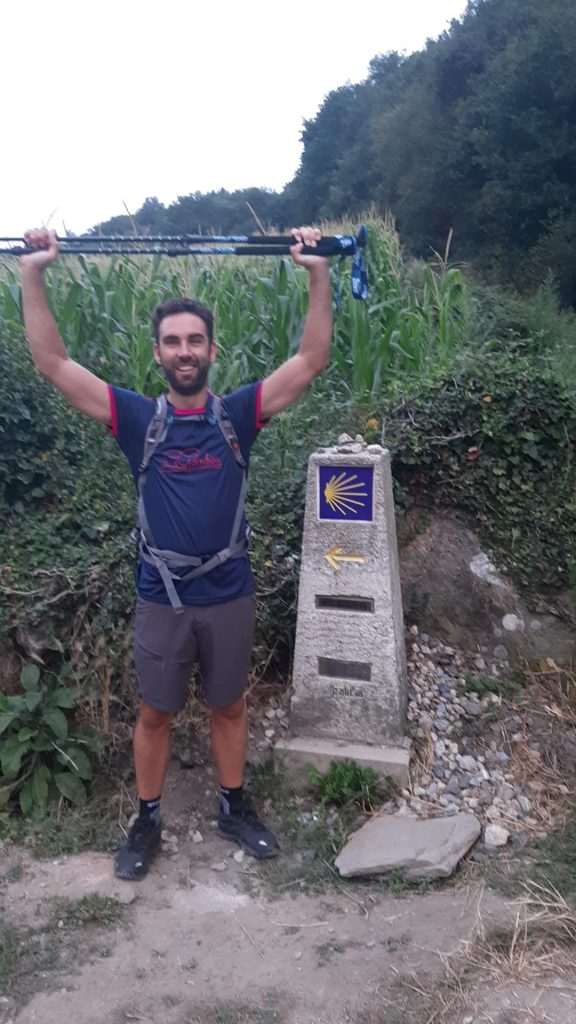
Manel Flores
I am Manel Flores. I was a military professional until 2015 when I was diagnosed with ataxia, a neurodegenerative disease that affects balance, vision, and speech. In 2023, already retired and living with this condition, I decided to take on the Camino de Santiago over two years.
• 1st completed in 2023: Mozarabic Way from Hinojosa del Duque (my hometown), Via de la Plata, and Sanabrés Way.
• 2nd completed in 2024: Mozarabic Way from Almería to Hinojosa, thus completing the longest route.
My motivation to begin the Camino came from a setback in life, but from the very first stage, I realised there are all kinds of people: good-hearted individuals who treat you for who you are, not out of pity or to gain something from an act of kindness, as others might. I also discovered that pilgrims and hosts are made of something special. I met people who will forever remain in my heart, like Ángela and Paco, hosts from Fontanillas de Castro, and José Antonio López Salvador, an athlete and pilgrim with a disability.
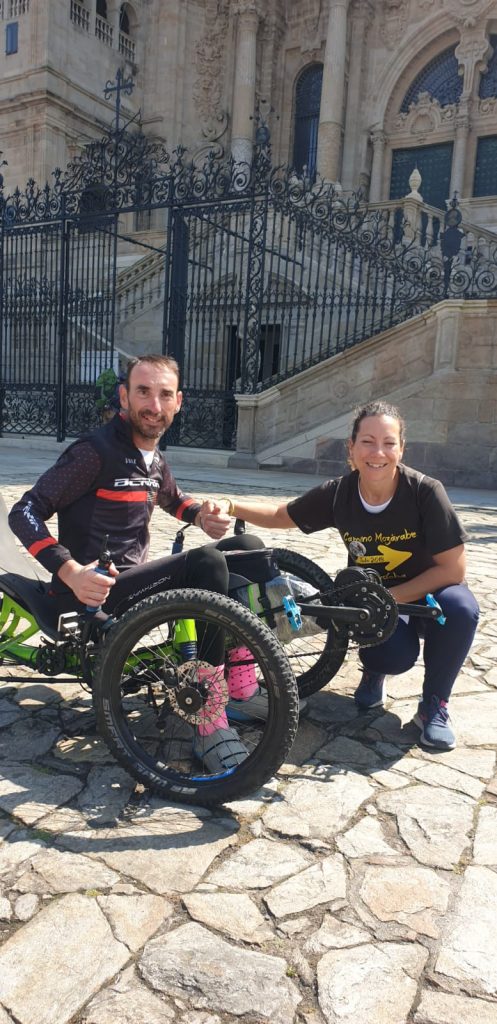
Janina Rębisz
Without a doubt, the best part of the mobilities are the people. Being so far removed from my daily life, conversations on various, usually unspoken topics came up incredibly often. Cultures of countries I had practically no knowledge of before became closer to me by accidentally discovering them during the activities.
I am very happy that I could take part in it. I met fascinating people from different countries, with whom I am still in touch.
The projects allowed me to open up. I was able to break the language barrier with simple conversations, because each of us wanted to get to know each other.
I think that anyone who is willing to explore and discover new cultures from the inside should try to take part in an mobilities at least once. It allows us to open up and overcome our barriers, and also helps us to further develop our language skills.
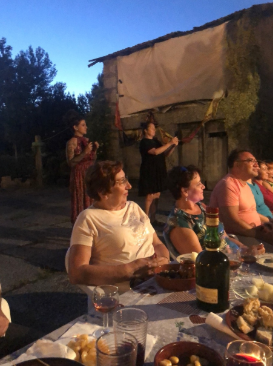
Ariana
I did participate before in several activities and events dedicated to sport and walking. I must say I like it quite much because it can offer lots and lots of interesting opportunities. However, as a visually impaired person I really like to have a support person that can describe everything to me – how the scenery looks like, whether there are flowers or insects around me, otherwise it is all too boring. Once I went on a project that involved daily walks of 2-3 hours, but for me that was too easy. I am doing climbing at competition level; therefore, I need something more challenging where I can feel I am making an effort. I heard about Camino de Santiago, and I am honestly thinking to try it one day, but I also need to find a support person that has the same passions as I have, otherwise I don’t think it will work.
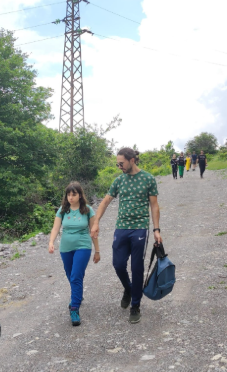
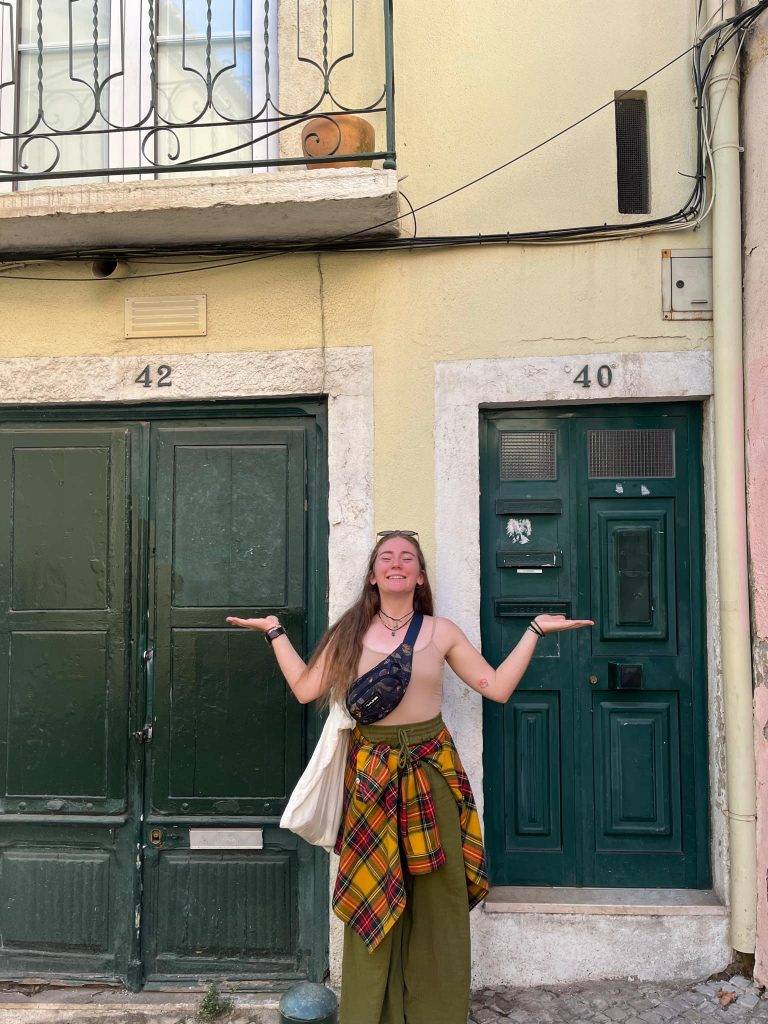
Pia Sivec
To successfully include individuals with varying needs in outdoor activities, it is essential to tailor these experiences to each person’s specific requirements. For example, when we facilitated nature camps for individuals with mobility challenges, we observed a need for additional support to ensure safety. Often, challenges like balance issues shouldn’t hinder someone from enjoying nature with a companion. Simple additions, such as handrails, can provide a profound sense of security, stability, and control, enhancing confidence in navigating outdoor spaces.
In Slovenia, organizations like In Planinc play a crucial role in promoting accessible outdoor adventures. They offer specialized equipment to ensure that participants with mobility limitations feel secure and supported. To further improve inclusion, it’s vital to provide targeted training for those involved in outdoor education—teachers, caregivers, and facilitators alike—to enhance their skills in supporting individuals with diverse needs.
While Slovenia has introduced accessible trails designed for people with special needs, more extensive efforts are needed to establish a comprehensive, inclusive approach across the country. An inclusive environment extends beyond infrastructure; it involves fostering a welcoming culture that actively encourages the participation of all individuals.
Haidi Marie Dokl
My name is Haidi. I am currently staying in the closed unit of the Nina Pokorn Grmovje Residence in Žalec Slovenia. I ended up here without consent after a court order. I have been here for ten months now. There are 14 of us in the closed unit and each of us has different types of mental problems. Those of us who end up here are only allowed to go out into nature for a walk twice a day. Even then, it only takes five minutes, and that's only if the weather is nice. There are access roads to woods and meadows all around us, but we never go there, we always take the same simple route. We get almost no exercise, but it is the only free movement we are allowed. I myself have not been allowed to go for a walk for the last six months. In this way, I feel that the control over my movement has become even tighter. I am forced to live between the four walls, and I often go mad and start throwing chairs. Rage builds up inside me. My walks are decided by the whims of the psychiatrist I see every Friday. If she decides that I have behaved well, I can go for a walk, otherwise not. I wish I could live in an open unit of any institution, where I would have access to nature, forests and meadows. When you live in an open unit, you can also go to the pub and have pizzas. You feel like a free person. Nature gives me the feeling of being a free person.
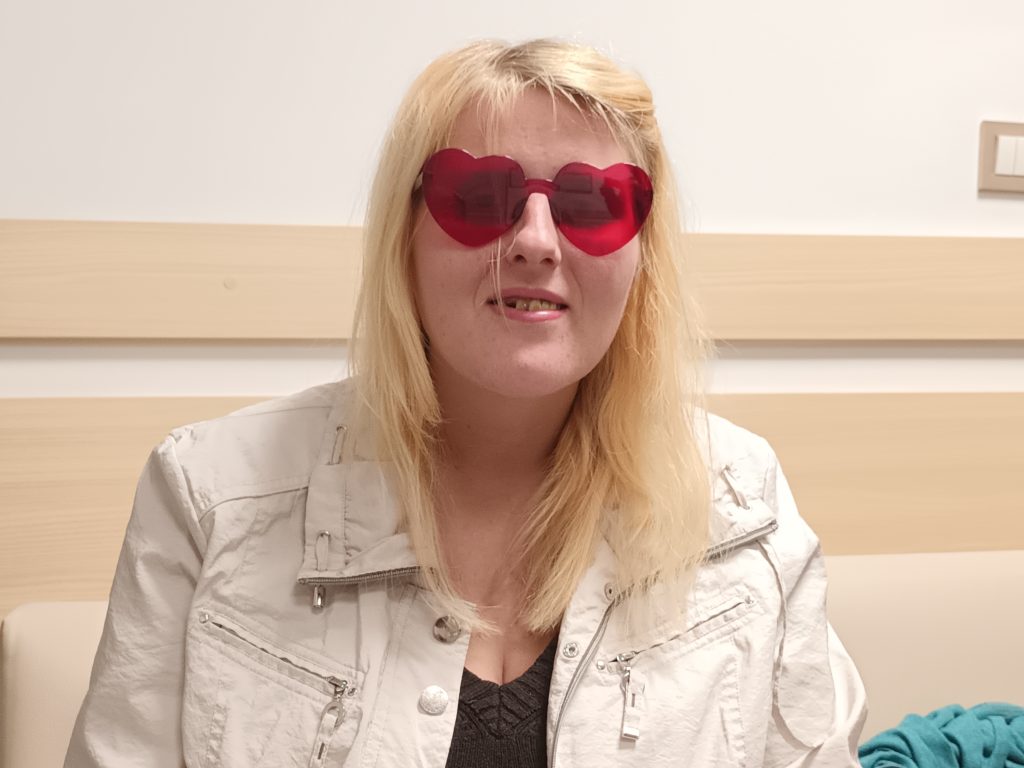
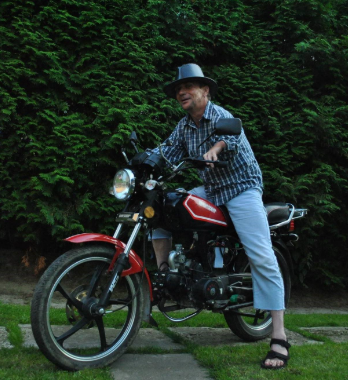
Jerzy Stys
It is hard to believe but the first time I travelled abroad I was in my late 30-ties. I was working in Vocational Activity Workshop and living in rural areas. The workshop started to cooperate with Viva Femina in EU projects and some people with disabilities were invited to travel abroad to participate in learning and teaching activities. I have participated in mobilities in Bulgaria and Italy and it was the best experience in my life. As an artist, I paint, I really appreciated to see other culture and art. I would not be able to travel alone, it will be too scary for me and I do not speak foreign languages. The mobilities were organized very well, translation was provided and I was able to travel with assistant. Travelling gave me new energy, motivation, I was proud of myself.
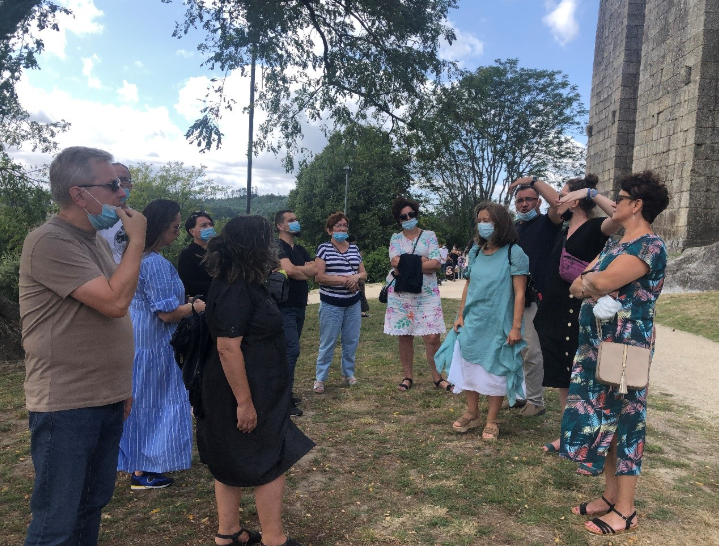
Ewa Grad
I have started working for Viva Femina foundation over 10 years ago. As a person with disability I was always very active professionally. Participation in training and learning mobilities open a whole new educational possibilities for me.
I was especially interested in participation in projects concerning women entrepreneurship training, empowerment of women with disabilities in social and vocational life.
My exchange experience in Portugal, Malta, Spain and Italy were more than just getting to know a new country. It is above all discovering new perspectives, making amazing friends and having unforgettable adventures. I am grateful for this opportunity and I highly recommend everyone to participate in Erasmus+ projects.
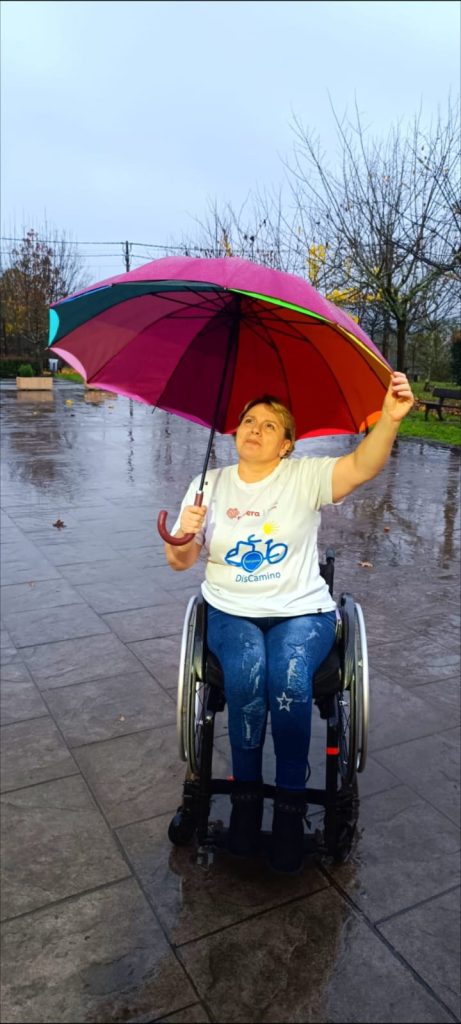
Mónica
I'm Mónica. In 2011, a work accident left me paralyzed. After eight long months in the hospital, I went home to face a life I didn’t recognize.
In 2017, I saw a talk by DisCamino and was blown away by what they did. People with disabilities doing the Camino de Santiago? I cried watching them. I admired them, but never thought I could be one of them.
In 2019, I finally tried their bikes. That moment gave me back a sense of freedom I thought was gone forever. It lit a spark in me.
In 2020, I took on the full Camino from Roncesvalles to Santiago on a mountain handbike. It was the hardest and most amazing thing I’ve ever done. I laughed, cried, struggled, and felt truly alive again.
Since then, I’ve done eight more Caminos, crossed parts of Spain, and even climbed Mulhacén and Veleta. DisCamino gave me purpose, confidence, and a new way to live. I’ll always carry that gift with me.
Buen camino!
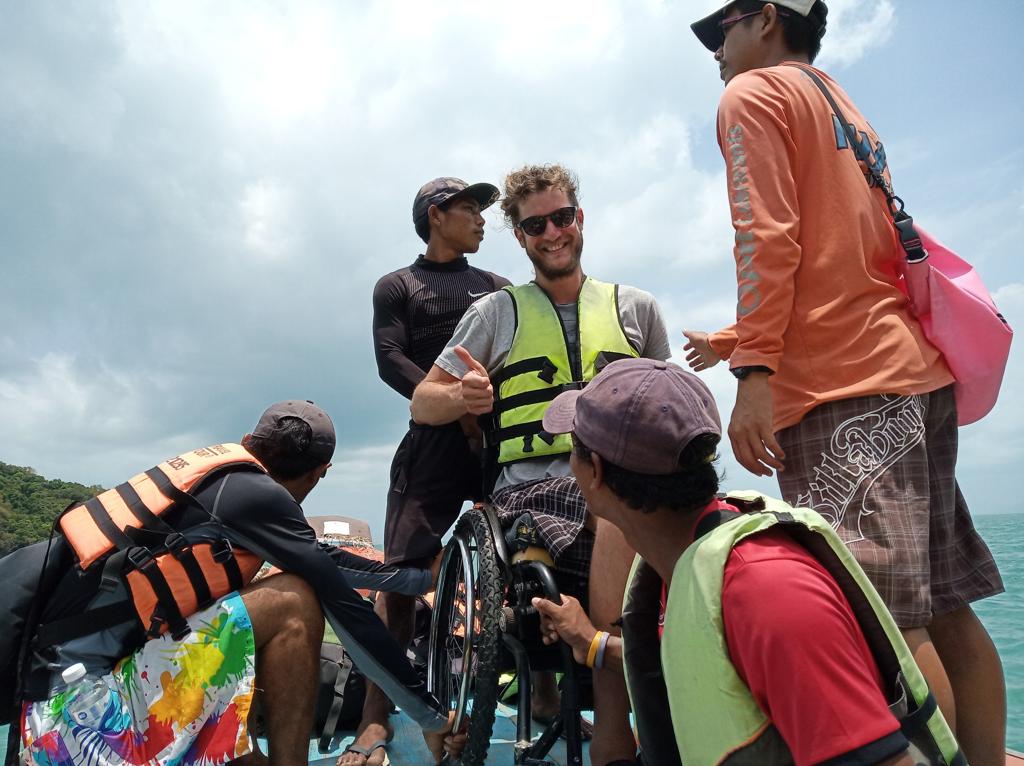
Aljoša Škaper
Firstly let me admit I have never been a scout, or a hiker or mountain enthusiast. However I used my accident for a fresh occupation, and started informing about accessible locations and services in Slovenia. Then after (some bad) experience with travelling I launched a mobile application Ljubljana by Wheelchair, gathering all the information someone who is mobility impaired and visits our capital would need.
While doing these and other accessibility projects, also some via Erasmus+, I met some people that after their injury, which limited their mobility, missed the outdoors and mountains the most.
For me personally, it was football. Now, even if the world was completely accessible for all of us, there would still be many things that some of us couldn't do, or have to do a bit differently. So please let's at least change the things we can, and make as much experience as possible accessible for everyone. Let me also conclude with my experience - Once I got thicker off road wheelchair tires (as in the picture), plus electric attachment for my wheelchair, I actually finally started enjoying the outdoors more, started going on "walks in the woods", hikes, nature paths and even some smaller hills. So let's make a way, as there is a will within all of us!
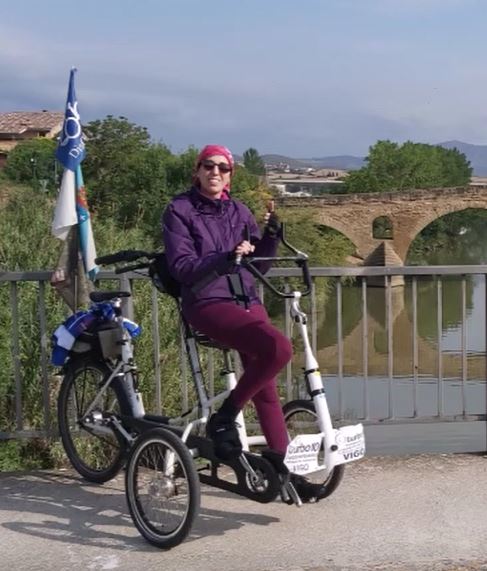
Angélica
I'm Angélica, from La Zarza, a small town in Extremadura. I was diagnosed with multiple sclerosis at 27, and soon after, I needed a wheelchair. I had always dreamed of doing the Camino de Santiago, but kept putting it off—until life changed, and it felt out of reach.
One day, a friend showed me DisCamino on social media and said, “Look, you can still do the Camino.” I called right away. Javier answered with kindness, asked about my needs, and explained how they could adapt everything.
In 2022, I did my first Camino—the Portuguese route, in a Joëlette chair. It was amazing. I enjoyed the landscapes, the people, and the feeling of truly belonging.
The next year, we set our sights on the French route. I didn’t want to use the chair again—it felt too easy. So I challenged myself to do it on a tandem bike. With training and their support, I did it! In 2023, I rode 750 km in 14 days with Javier. I couldn’t walk 50 meters, yet I pedaled across northern Spain.
On that bike, I felt free. I forgot about my wheelchair. Crossing the finish line brought joy and sadness—joy for the journey, sadness to say goodbye to the team who became like family.
This isn’t the end. Just the start of more adventures. Thank you, DisCamino, for doing everything with heart.
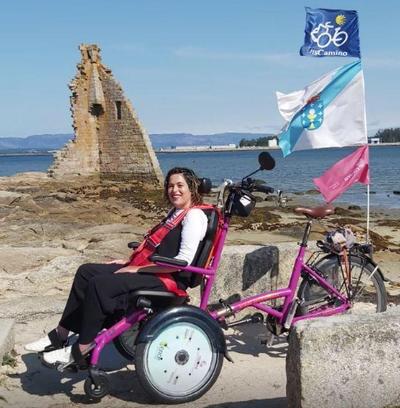
Merchi Álvarez Fernández.
Pensioner by force, joy-seeker by choice. At 26, I was hit with a rare, progressive neuromuscular disease. Now, at 37, I use a wheelchair and can't move anything below my neck. Still, that doesn't stop me from living fully.
Four years ago, I stumbled upon DisCamino. That meeting changed everything. My first Camino was in 2023—Burgos to Santiago. It came at the perfect time. I laughed, reconnected, felt supported, and soaked in every moment. The second one, Donostia to Santiago along the northern route, was extra special. I did it with my 14-year-old son, Mateo.
Every arrival in the Obradoiro Square hits differently, but the joy I feel is always the same. When I think of the Camino, I smile. I remember the laughs, the mix of people, the deep talks, the landscapes, the curious animals, the smells, the sounds... I’ll never forget the frogs singing under the bridge right after getting the Virgin of the Miraculous Medal in Rabé.
This year, I'm doing it again—this time the full route along the coast of Portugal to the Algarve. Of course, Mateo’s coming too.
If you have a disability and you’re unsure about doing the Camino, I’m telling you: with DisCamino, it’s possible. They’ll be your legs and arms, always with kindness and good vibes.
If I, without being able to move a single muscle below my neck, have done two Caminos and can’t wait for the third—what’s stopping you?
